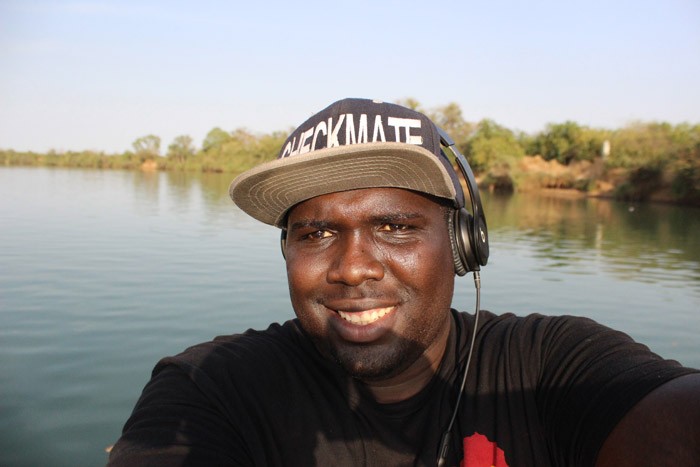Graduate working to bring clinics to his native Gambia

LAWRENCE — Bakary Suso has just graduated with his master's degree in architecture, concluding a yearlong thesis that he hopes is just the beginning of something much bigger.
His hope is to build 280 medical clinics, called “trekking stations,” for his native Gambia.
“It all started because I had a dream about making places back home where children could play," he said.
Suso’s mother, Bintou, who formerly worked for the U.N. Population Fund and is now a program officer for the Gambia Family Planning Association, had other ideas.
“She said, ‘Yes, the playgrounds are good, but health care is a more immediate need,'" Suso said.
But unlike many architecture thesis projects, which might only explore building designs, he branched out.
To make his vision practicable, Suso attacked problems that have kept the trekking stations from being constructed before, such as building materials shortages and the lack of a mechanism for fundraising.
Last fall several donors contributed enough private funds for him to travel to Gambia. There he met with members of the Ministry of Health to gain their support and to learn about their medical infrastructure.
Gambia has six main hospitals and 38 heath centers. But the first point of contact for patients takes place at the 280 trekking stations, where basic care is provided for women and children. To meet the people his clinics would serve and experience conditions for himself, he went deep into the countryside, where he learned conditions could be quite primitive.
“One or two nurses visit a trekking station once a month,” he said. “In some cases they simply sit under a tree, and more than a hundred people will line up to see them. Some of the patients I met walked over nine kilometers to be there.”
Another problem is that most permanent buildings in Gambia are made of concrete, which is quite costly.
The clinics Suso designed would be made of compressed earthen blocks made of clay mixed with a small amount of cement. Local metalworkers would build simple presses that unskilled workers could use to manufacture the blocks.
“After the trekking stations were built, the community would not just have an amenity for their villages, but people will be skilled as block-makers. Employment and a new economy could emerge,” he said.
Students in a School of Business class taught by Charlotte Tritch, associate director of entrepreneurship programs, helped Suso create a business model.
It includes ways of earning income to support Kinitiative, a nonprofit he and volunteers from the construction, health care and business fields have formed to raise funds.
“Bakary’s research was unique in several respects,” said Kent Spreckelmeyer, professor of architecture and one of Suso’s thesis advisers.
“He has taken on a difficult design problem,” he said, “but by coming up with a way to manufacture the building materials, doing actual fundraising and forming a nonprofit, he has taken real steps toward seeing the clinics built one day.”
Suso says that not while it has not yet built a trekking station, Kinitative is well on its way to funding the first.